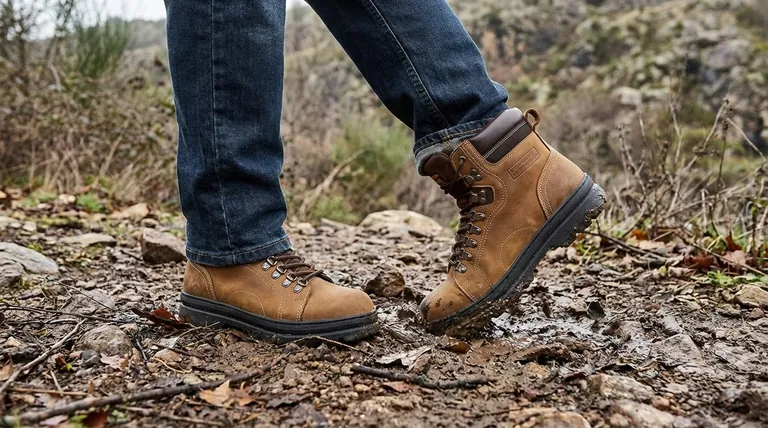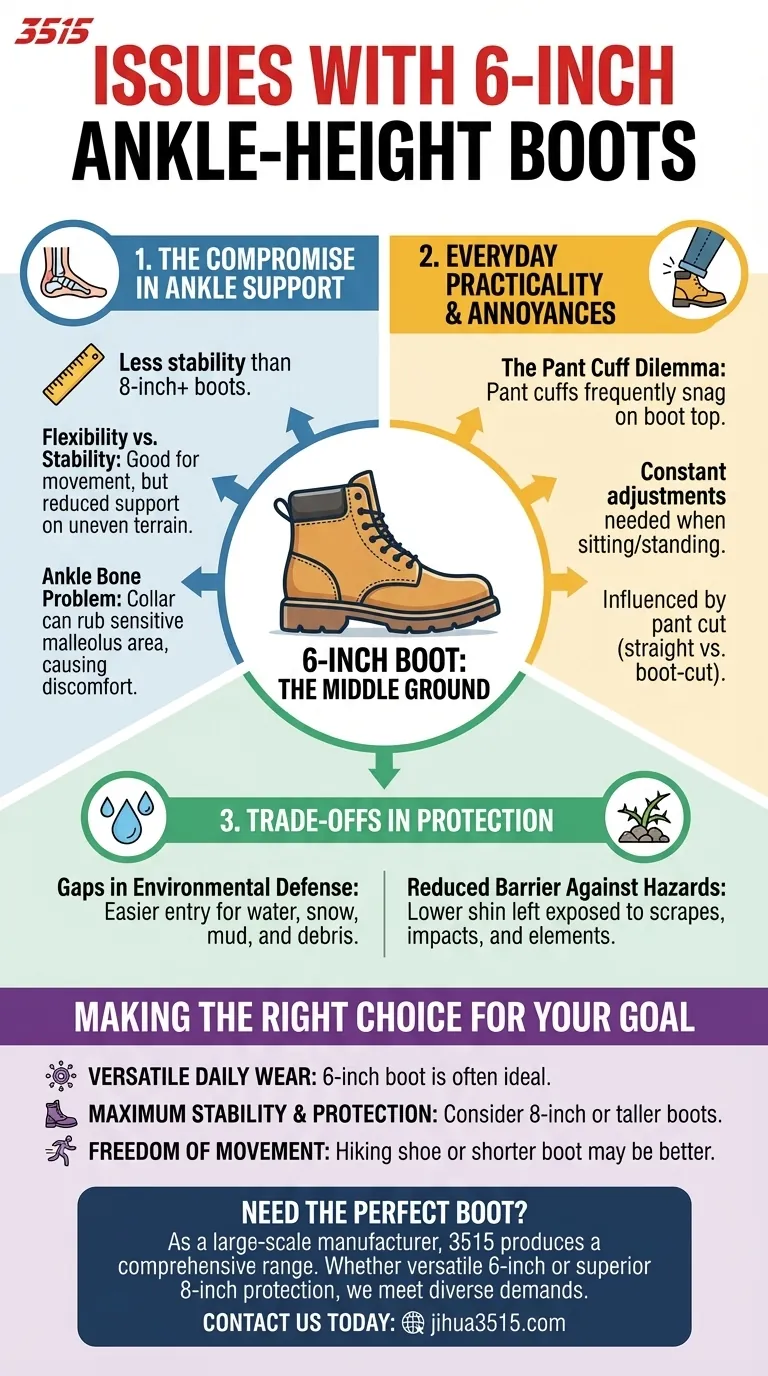While highly versatile, the primary issues with 6-inch ankle-height boots stem from their position as a "middle ground" option. They can offer less ankle support than taller boots, create practical annoyances with clothing like pant cuffs getting caught, and provide less protection from environmental elements like water or debris.
Six-inch boots occupy a middle ground between full-height boots and standard shoes, offering versatility at the cost of specialized protection and support. Understanding this inherent trade-off is the key to determining if they fit your specific needs.

The Compromise in Ankle Support
A common point of confusion is how much support a 6-inch boot actually provides. While superior to a low-cut shoe, it doesn't offer the same stability as taller counterparts.
Where Support Begins and Ends
The 6-inch height is designed to cover the ankle joint itself. However, true torsional stability comes from immobilizing the lower leg, which requires an 8-inch or taller boot shaft.
The "Ankle Bone" Problem
Some wearers report discomfort directly around the ankle bones (malleolus). The collar of a 6-inch boot can sit directly on this sensitive area, causing rubbing and irritation, especially during the break-in period or if the boot isn't a perfect fit.
Flexibility vs. Stability
This height provides excellent flexibility for tasks that involve frequent crouching or climbing. The trade-off is reduced support on uneven terrain, where a taller, more rigid boot would better prevent ankle rolls.
Everyday Practicality and Annoyances
Beyond technical performance, the 6-inch height can introduce minor but persistent daily frustrations that are important to consider.
The Pant Cuff Dilemma
A frequent complaint is that pant cuffs get caught on the top of the boot. This is especially common when sitting down, standing up, or exiting a vehicle, requiring constant adjustment.
A Matter of Fit and Style
This issue is heavily influenced by the cut of your pants. Straight-leg or tapered pants are more likely to snag, whereas boot-cut styles are designed to accommodate the boot shaft more easily.
Understanding the Trade-offs in Protection
A taller boot shaft is a simple barrier. By choosing a shorter, 6-inch boot, you are accepting a lower level of defense against the environment.
Gaps in Environmental Defense
The lower collar provides an easier entry point for water, snow, mud, and trail debris like pebbles or twigs. In wet or messy conditions, this can lead to discomfort and wet socks far more quickly than with an 8-inch boot.
Reduced Barrier Against Hazards
The 6-inch height leaves the lower shin exposed. This makes you more vulnerable to scrapes from brush, impacts from rocks, or even minor workplace hazards that a taller boot would easily deflect.
Making the Right Choice for Your Goal
To select the correct boot height, you must align the boot's design compromises with your primary activities.
- If your primary focus is versatile daily wear: The 6-inch boot is often the ideal choice, balancing more support than a shoe with greater comfort and mobility than a taller work boot.
- If your primary focus is maximum stability and protection: You should strongly consider an 8-inch or taller boot, especially for rugged hiking, demanding physical labor, or harsh weather.
- If your primary focus is freedom of movement for light tasks: A hiking shoe or a boot shorter than 6 inches might offer better flexibility without the potential for irritation around the ankle bone.
Choosing the right boot height is about matching the tool to the specific demands of your environment and activity.
Summary Table:
| Issue Category | Key Concerns |
|---|---|
| Ankle Support | Less stability than taller boots; potential for rubbing on ankle bones. |
| Practicality | Pant cuffs can snag; influenced by pant style (e.g., straight-leg vs. boot-cut). |
| Protection | More vulnerable to water, debris, and impacts due to the shorter shaft height. |
Need the Perfect Boot for Your Needs?
As a large-scale manufacturer, 3515 produces a comprehensive range of footwear for distributors, brand owners, and bulk clients. Whether your customers require the versatile 6-inch height or the superior protection of an 8-inch boot, our production capabilities encompass all types of shoes and boots to meet diverse demands.
Let us help you find or create the ideal boot solution. Contact our experts today to discuss your specific requirements and leverage our manufacturing expertise.
Visual Guide

Related Products
- Custom Wholesale Leather Safety Boots Direct Factory Manufacturing
- Premium Wholesale Wheat Nubuck Safety Boot with Rapid Lacing System
- Customizable Anti-Smash Safety Boots for Wholesale & Private Label Manufacturing
- Premium High-Cut Waterproof Safety Boots Manufacturing & Wholesale Solutions
- Premium Grain Leather Safety Boots for Bulk Supply
People Also Ask
- What are the differences between steel toe, composite toe, and alloy toe Wellington boots? Choose the Right Safety Toe for Your Job
- Do moc toe boots have steel toe? Get Durable, Safety-Compliant Footwear
- What's the difference between safety toe and steel toe? Choose the Right Protective Footwear.
- Is there a downside to steel toe boots? Weighing Protection Against Daily Comfort
- Why is the last important in work boot design? It's the Anatomical Blueprint for Comfort & Safety



















